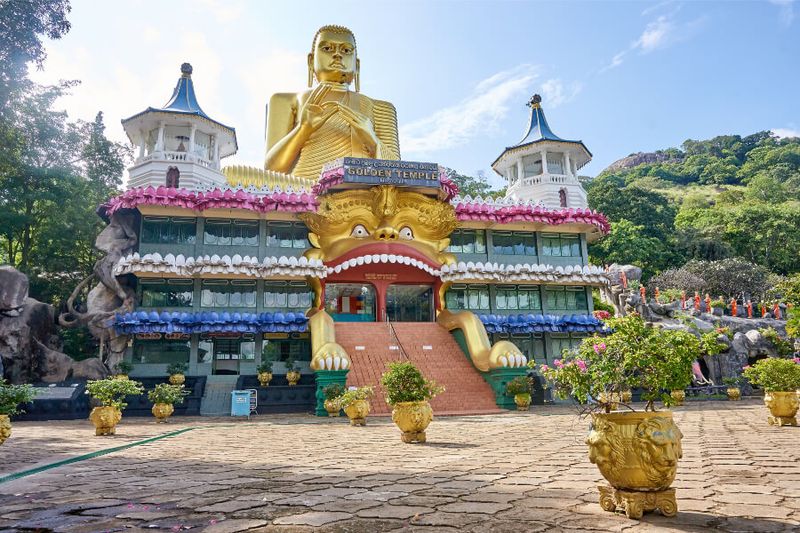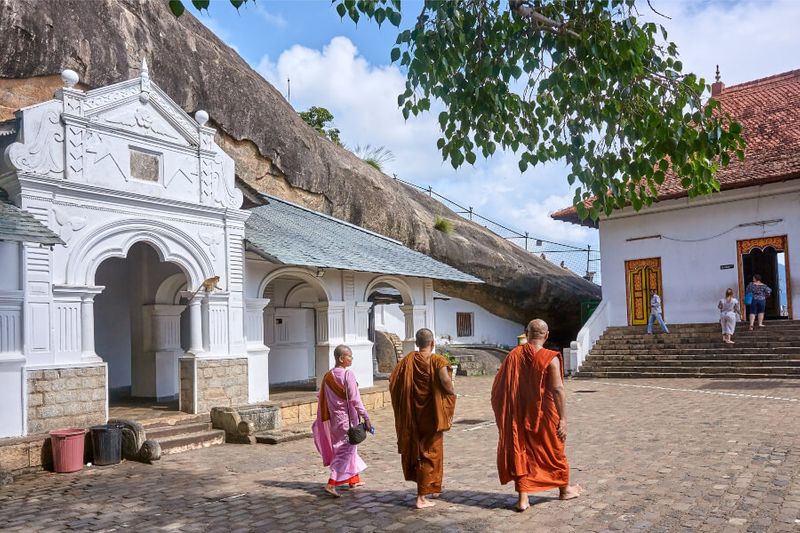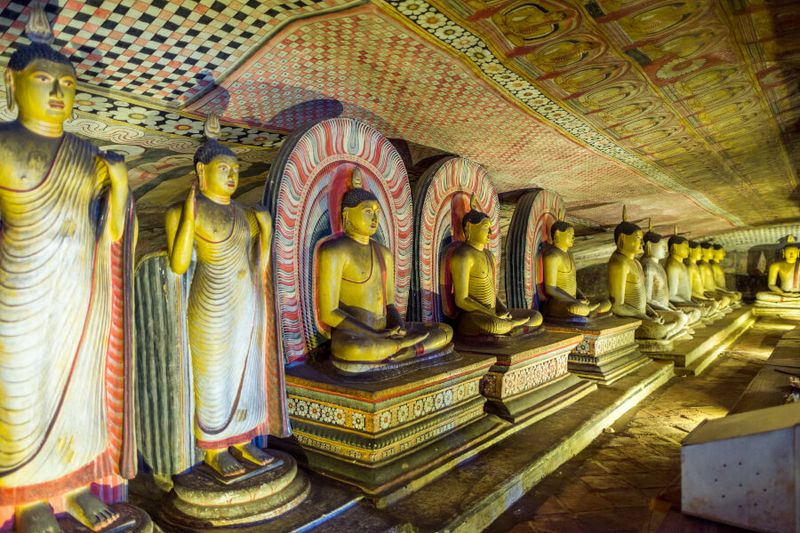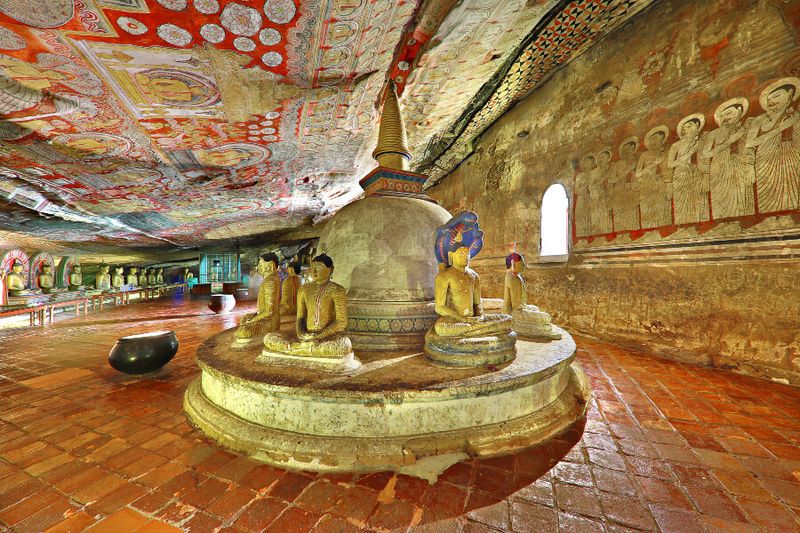Immerse yourself in an astonishing array of ancient Buddhist art at the Dambulla caves
Sri Lanka’s exquisitely detailed Dambulla Cave Temple is located about 45 km away from Kandy, and is often overlooked for the nearby allure of Sirigiya Rock. This UNESCO World Heritage site – sometimes called the Golden Rock Temple – is still a functioning monastery, and one of the most well-preserved cave temple complexes in Sri Lanka.
Upon arrival, take in the striking Golden Temple entrance which resembles a wide-eyed, open-jawed golden lion. Above looms an immense golden Buddha. Visitors are then presented with a mildly challenging hillside climb via stone steps (beware of overly cheeky monkeys).
Even before the arrival of Buddhism in Sri Lanka, evidence of human remains indicate that the dozens of caves in the Dambulla area were home to prehistoric people. Built in the 2nd century, the complex is carved into an imposing 160-metre tall granite rock formation, and is made up of five caves. The caves were carved with a 'drip ledge' in the rock to channel water away from the delicate interiors, which contain ancient paintings, statues, frescoes, murals, and other irreplaceably precious artwork. Not all the caves are open to the public.
The monastery is home to the chapter of Buddhist monks, who continue to perform their daily rituals and routines that include caring for the intricate caves. At certain times of the day, a short offering or musical ceremony may take place in certain areas, so check ahead and be respectful of curtains screening a portion of the cave during these times.
Hidden history
The site was first used as a place of worship as far back as the 1st century, when King Valagamba of Anuradhapura (also known as Vattagamani Abhaya) used the caves as a hiding place from Tamil invaders. Many accounts say that cave-dwelling monks helped the king, and in his gratitude, he transformed their simple retreat into a vast temple. Valagamba also built the enormous monastery Abhayagiri Vihāra between 89 to 77 BC. Through the decades, the Dambulla complex has undergone various additions, preservation work, and refurbishments, with Kandyian royalty overseeing a notable conservation project in the 18th century. Other kings who have left their mark at Dambulla includes Nissankamalla and Senaratna.
Ancient art
Dambulla’s simple white façade protects a wealth of ancient religious art within the complex walls. Today, it is home to a plethora of Buddha statues, as well as over 1,500 paintings and is a must-visit destination for many pilgrims. Dambulla’s magnificent 14m long reclining Buddha is housed in the Cave of the Divine King (or devaraja lena), which also features an ancient Brahmi inscription that describes how the monastery was founded.
Much of the art here is Buddhist, and encompasses work from the early centuries all the way through the 18th century; getting up close with Dambulla’s sheer range of offerings is a significant moment for any scholar of religious art, especially those interested in Buddha statuary and symbolism.







